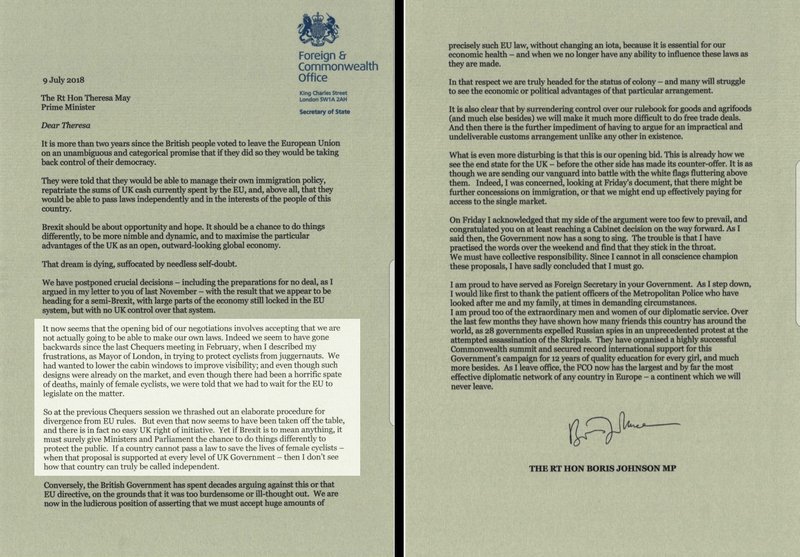Mr Johnson has made a variation of this claim—most recently made in his letter resigning as Foreign Secretary—
several times in the past. It's correct that laws on lorry design standards are set at EU level.
However, the EU did vote to amend its law on the matter in 2014, widening lorry design specifications to increase driver visibility and reduce the chance of serious injury in a low-speed collision. In the months prior to that vote, Mr Johnson criticised the British government for being opposed to the EU’s reforms (it eventually voted in favour, as did all EU member states).
The new design is optional, not mandatory, and new-design lorries won’t be allowed on the road until 2019 or 2020.
The EU legislated on lorry design in 2015
EU rules on the maximum dimensions of lorries were set out in a directive from 1996. As an EU member, the UK has to follow this directive. It is the reason why today’s lorries are “brick-shaped”, according to the European Commission.
In 2014, the European Parliament voted to support an amendment to the directive, which allows lorries to exceed the legal dimensions if it makes them greener and safer. This change was first proposed in April 2013, the same year that Mr Johnson says he first wanted a change of law.
These rules became a new law, or “directive” in 2015. The new rules allow manufacturers to produce lorry cabs that have a more rounded shape, which improves visibility for the driver and reduces the risk of serious injury in the event of a low-speed collision. The directive also aims to improve the environmental performance of lorries. These rules are not mandatory—older lorry designs will still be allowed on the road.
The European Commission told us that the new-design trucks will appear on European roads as of 2020, and that the Commission has proposed to bring that date forward to 2019.
It was widely reported in 2014 and 2015 that the delay in the trucks being allowed on the road was as a result of a compromise agreement with the French and Swedish governments. France and Sweden were pushing for the implementation of the law to be delayed by ten years, in order to protect their domestic lorry manufacturers.
When the amendments were being debated in January 2014, Mr Johnson was quoted as saying they could “save literally hundreds of lives across the EU in years to come”.
At the same time, he expressed concern that the UK government was not supportive of the EU amendments. “I am deeply concerned at the position of the British government and urge them to embrace this vital issue.” The government was quoted in response as confirming that it was not supporting the European Parliament’s proposals at the time.
This runs counter to Mr Johnson’s suggestion that that a proposal to change the law on lorry design was “supported at every level of UK government” while they “had to wait for the EU to legislate”. It appears that the government initially opposed the EU’s attempt to legislate on the issue, only to later vote in favour of it.
